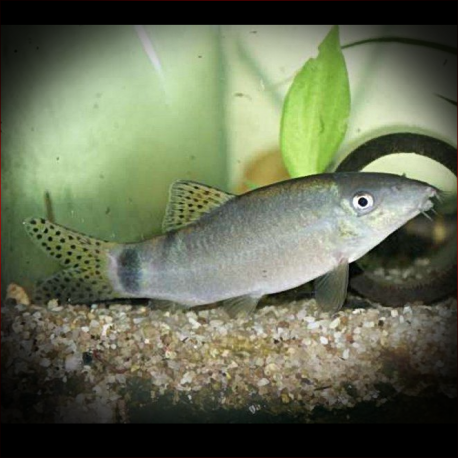More info
Datasheet
| Minimum Tank Size | 160 litres / 42.27 US gallons |
| Maximum Size | 10.0cm / 3.94inches |
| Temperature | 23°C / 73.40°F - 30°C / 86.00°F |
| Hardness | 1.01dgH / 18ppm - 12.05dgH / 215ppm |
| pH | 6.0-7.5 |
General Description
The Yasuhikotakia Caudipunctata, commonly known as the Speckle-Tailed Loach, is a species sought after by aquarium enthusiasts due to its rarity in the trade. It possesses distinct characteristics such as 8 branched dorsal-fin rays, small brownish markings on the body, and numerous blackish spots in the fins. The genus Yasuhikotakia was established to include former Botia members, emphasizing specific morphological traits.
Aquarium Setup
For this species, a well-structured tank setup is necessary, with options for natural-style decor such as sand or fine gravel, smooth rocks, driftwood, and plants like Java Fern and Java Moss. Plenty of hiding spots should be provided, avoiding sharp edges that could harm the fish. Water must be well-oxygenated, free of organic wastes, and maintained with regular water changes.
Behaviour
Yasuhikotakia Caudipunctata are known to be milder in temperament compared to some congeners. They exhibit gregarious behavior, forming complex social hierarchies best maintained in groups of at least 5 or 6 specimens. Dominance battles and group dynamics are common, with behaviors like "greying out" during confrontations and "shadowing" where younger fish mimic older individuals observed. Communication through audible clicking sounds and a unique "loachy dance" adds to their interesting behavior repertoire.
Feeding and Diet
Primarily carnivorous, Speckle-Tailed Loaches will also consume plant matter if available. A varied diet comprising quality dried products, live or frozen foods, fresh fruits, and vegetables is essential for their nutrition. Care should be taken to ensure a balanced intake and avoid overreliance on any specific food source.
Reproduction & Dimorphism
No reports of breeding in home aquaria exist, but commercial farming of some Yasuhikotakia species is done using hormones. Sexually mature females tend to be fuller-bodied and slightly larger than males, showcasing minor sexual dimorphism.
Habitat and Distribution
Native to the Mekong river drainage in Laos, Yasuhikotakia Caudipunctata is found in clear, well-oxygenated, running water with rock or gravel substrates. Specific details on its distribution within the Mekong tributaries remain scarce, suggesting a need for further research to fully understand its habitat preferences and range.

